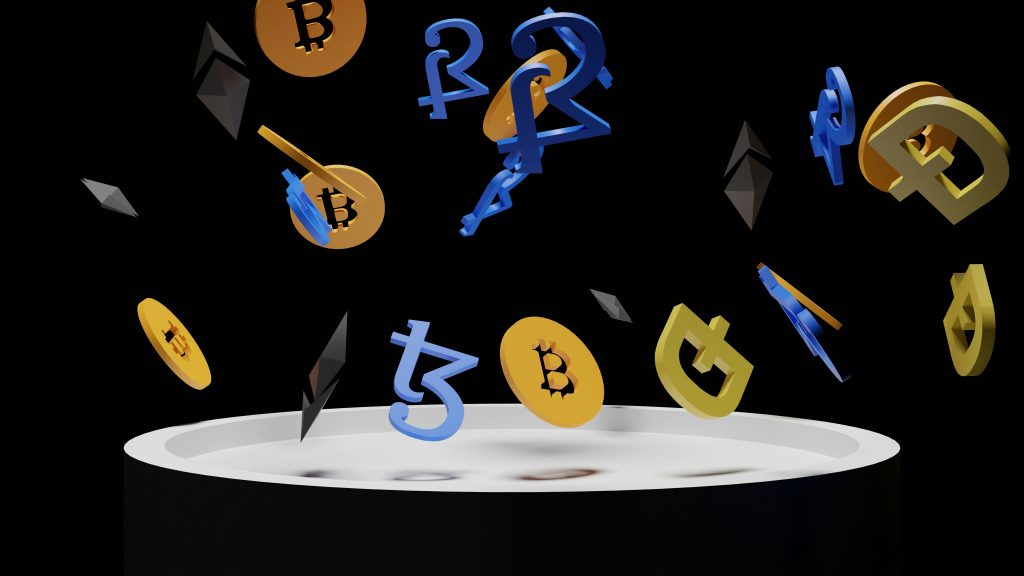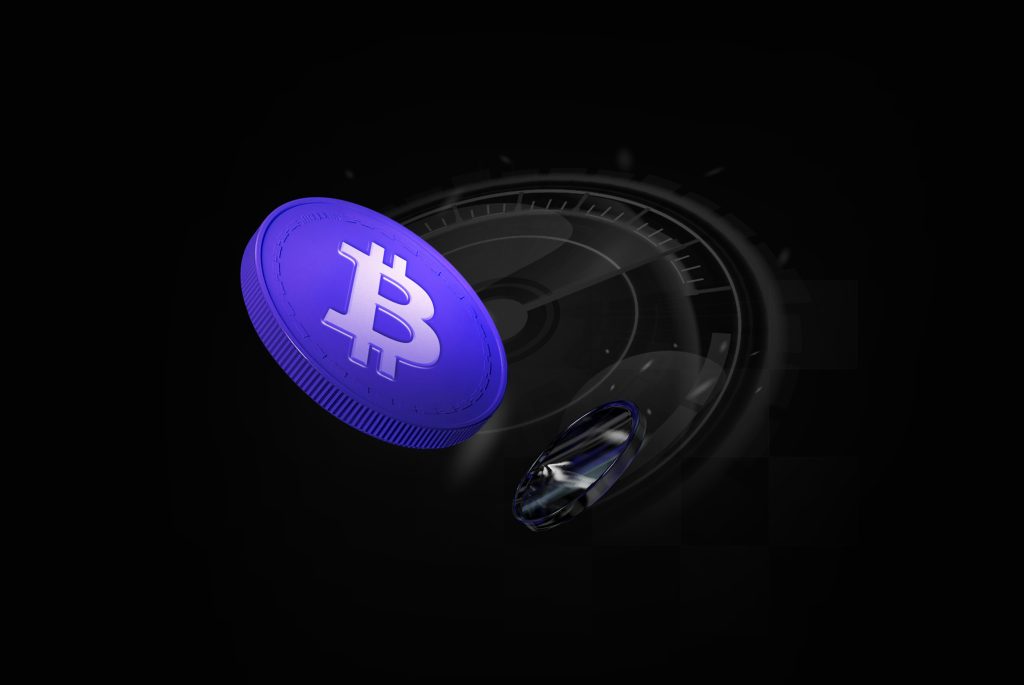Best crypto exchanges with demo trading
A demo account on a crypto exchange is a virtual account that lets you trade cryptocurrency without risking real money. The user gets a test balance in USDT, BTC, ETH, or other coins and can practice trading using real market quotes. This tool is especially useful for beginners just getting acquainted with the crypto market, as well as for experienced traders who want to test new strategies or exchange features.
Today, many popular crypto platforms offer demo trading. Conditions differ: somewhere you get a fixed virtual balance, elsewhere you can top it up manually. In some cases, access is only to the futures market, in others — to spot trading as well. Below is a ranking of crypto exchanges where you can open a demo account and safely learn how to work with crypto assets.

1. Bybit
| Parameter |
Data |
| Types of demo trading |
Futures |
| Demo balance |
50,000 USDT, 50,000 USDC, 1 BTC, 1 ETH |
| Fiat support |
Yes (p2p, card purchase) |
| Leverage |
Up to 100x |
| Verification |
Required |
| Fees |
Spot up to 0.1%, futures up to 0.055% |
| Launch year |
2018 |
| Features |
Supports copy trading and trading bots, API; demo account is activated from the main account |
2. OKX
| Parameter |
Data |
| Types of demo trading |
Spot, futures |
| Demo balance |
Balance in 10+ cryptocurrencies |
| Fiat support |
Yes (p2p, card purchase; RUB not supported) |
| Leverage |
Up to 100x |
| Verification |
Required |
| Fees |
Spot up to 0.1%, futures up to 0.05% |
| Launch year |
2017 |
| Features |
Demo enabled via “Trade” → “Demo trading”, user-friendly interface, copy trading |
3. Binance
| Parameter |
Data |
| Types of demo trading |
Futures |
| Demo balance |
3000 USDT |
| Fiat support |
Yes (fiat accounts, p2p, card purchase; RUB not supported) |
| Leverage |
Up to 125x |
| Verification |
Required |
| Fees |
Spot up to 0.1%, futures up to 0.05% |
| Launch year |
2017 |
| Features |
Demo account is available at testnet.binancefuture.com, separate account; advanced functionality (leverage, margin trades, auto-deleveraging) |
4. BingX
| Parameter |
Data |
| Types of demo trading |
Futures |
| Demo balance |
100,000 VST (virtual USDT) |
| Fiat support |
Yes (p2p, card purchase) |
| Leverage |
Up to 125x |
| Verification |
Not required |
| Fees |
Spot up to 0.1%, futures up to 0.05% |
| Launch year |
2018 |
| Features |
Demo trading is available directly in the terminal; you can request extra VST if less than <20,000 remains |
5. MEXC
| Parameter |
Data |
| Types of demo trading |
Futures |
| Demo balance |
50,000 USDT, 10 BTC, and 100 ETH |
| Fiat support |
Yes (p2p, card purchase) |
| Leverage |
Up to 200x |
| Verification |
Not required |
| Fees |
Spot up to 0.05%, futures up to 0.02% |
| Launch year |
2018 |
| Features |
Demo trading is enabled via “Futures” → “Demo trading”; you can get test BTC/ETH in a couple of clicks |
6. Bitget
| Parameter |
Data |
| Types of demo trading |
Futures (USDT-M, USDC-M, COIN-M) |
| Demo balance |
3000 SUSDT / SUSDC or 1 SBTC |
| Fiat support |
Yes (p2p, card purchase) |
| Leverage |
Up to 125x |
| Verification |
Required |
| Fees |
Spot up to 0.1%, futures up to 0.06% |
| Launch year |
2018 |
| Features |
Demo is enabled right in the futures section; balance is credited automatically; supports copy trading |
7. Gate.io
| Parameter |
Data |
| Types of demo trading |
Futures, perpetuals, options |
| Demo balance |
3000 USDT |
| Fiat support |
Yes (p2p, card purchase) |
| Leverage |
Up to 125x |
| Verification |
Required |
| Fees |
Spot up to 0.1%, futures up to 0.05% |
| Launch year |
2013 |
| Features |
Demo is activated via “Futures” → “Demo trading”; daily 3000 USDT bonus for testnet; supports copy trading |
8. CoinEx
| Parameter |
Data |
| Types of demo trading |
Futures |
| Demo balance |
500,000 USDT |
| Fiat support |
Yes (p2p, card purchase) |
| Leverage |
Up to 100x |
| Verification |
Not required |
| Fees |
Spot up to 0.2%, futures up to 0.05% |
| Launch year |
2019 |
| Features |
Demo is activated via “Futures” → “Demo trading”; test balance is topped up to 500k USDT in a couple of clicks; beginner-friendly |
9. Phemex
| Parameter |
Data |
| Types of demo trading |
Spot, futures |
| Demo balance |
5000 USDT |
| Fiat support |
Yes (p2p, card purchase) |
| Leverage |
Up to 100x |
| Verification |
Not required |
| Fees |
Spot up to 0.1%, futures up to 0.06% |
| Launch year |
2019 |
| Features |
Demo is activated in “Contract” → “Test Trading”; a separate demo account is required, but you can use the same email; bot trading supported |
10. BitMEX
| Parameter |
Data |
| Types of demo trading |
Futures (perpetual contracts) |
| Demo balance |
100,000 USDT (or 0.01 XBT at start) |
| Fiat support |
Card purchase only |
| Leverage |
Up to 100x |
| Verification |
Required |
| Fees |
Spot up to 0.075%, futures up to 0.075% |
| Launch year |
2014 |
| Features |
Demo is activated via testnet.bitmex.com; separate account registration; topping up virtual BTC via faucets; full trading terminal functionality |
What is a demo account on a crypto exchange
A demo account is a training account with virtual funds that allows a user to learn the exchange interface, try different trading strategies, and understand how the crypto market works without risking real money.
What it’s for:
- for beginners — a safe entry into crypto trading;
- for experienced traders — testing new strategies;
- for learning the specifics of a particular platform.
Demo account features:
- Virtual coins cannot be withdrawn or exchanged for real ones.
- Market conditions are as close to real as possible.
- Some exchanges offer limited functionality in demo mode, but most basic trading tools are usually available.

How to choose a crypto exchange with a demo account
When choosing a platform for practice trading, it’s important to consider several parameters so that testing is as useful as possible:
1. Availability of a full demo mode
- There should be an option to use virtual funds for trading.
- It’s better if both spot and futures are available.
2. Accessibility for all users
- On some exchanges, the demo turns on right after registration.
- On others — you need to create a separate account (for example, a testnet).
3. Full functionality
- The closer the interface is to a real account, the better.
- Orders, charts, indicators, and leverage should be available.
4. Educational materials
- It’s important that the exchange provides guides, video tutorials, and articles.
- This helps beginners get up to speed faster.
5. Reputation and reliability
- Demo mode is useful only if the exchange itself is trustworthy.
- It’s better to choose platforms with Proof of Reserves and without scandals.
6. Device support
- The demo should work both in the browser and in the app.
- This will allow you to practice in any conditions.
What a demo account is used for
A demo account is useful not only for beginners but also for more experienced traders. Its purpose can be divided into several practical tasks:
1. Training beginners
- Allows you to safely get used to the crypto exchange interface.
- Gives the opportunity to test basic features: placing orders, setting stop-losses, using leverage.
2. Strategy practice
- Experienced traders use the demo to work out new strategies.
- You can test risky approaches without losing capital.
3. Understanding tools
- On a test account, you can get to know futures, options, and margin trading features.
- Especially useful for those who have only traded spot and want to expand their toolkit.
4. Preparation for real trading
- A demo account allows you to get hands-on practice and adapt to market conditions.
- After switching to a real account, a trader already has basic experience and minimizes mistakes.
Advantages of demo accounts
| Advantage |
What it gives the trader |
| Safe learning |
Beginners learn the exchange interface and trading mechanics without risking money |
| Strategy testing |
You can test new trading approaches in real market conditions |
| Learning tools |
Hands-on practice with futures, options, and leverage |
| Skill building |
The user gets used to order management, risk control, and chart analysis |
| Free experience |
All funds are virtual, so the trader risks nothing even when making mistakes |
Disadvantages of demo accounts
| Disadvantage |
What’s the issue |
| Lack of emotions |
There is no psychological pressure, so the experience differs from real trading |
| Loss of discipline |
Traders often act more riskily than on a real account |
| Limited functionality |
On some exchanges, the demo is only available for futures or requires a separate account |
| No real earnings |
Virtual coins cannot be withdrawn or exchanged for fiat |
Demo accounts on cryptocurrency exchanges are a convenient and safe tool for studying the market and practicing trading. They allow you to:
- test the platform’s functionality;
- learn to use orders and leverage;
- work out trading strategies;
- understand the psychological aspects of trading, but without risking capital.
However, demo trading also has limitations. The main one is the absence of the “emotions” that accompany real-money trades. Therefore, when transitioning to real trading, it’s important to start with minimal amounts to build discipline and learn to control risks.
Using a demo account is especially useful for beginners, but experienced traders also often use it to test new strategies. Ultimately, demo mode can be considered a necessary first step before full-fledged trading on cryptocurrency exchanges.
FAQ
What is a demo account on a crypto exchange?
It is a training account with virtual funds that allows you to trade without the risk of losing real money.
Why do you need a demo account?
To get used to the exchange interface, try out new strategies, and learn about trading tools.
Can you make money on a demo account?
No. All coins are virtual and cannot be withdrawn.
How do you open a demo account?
On most exchanges, a demo account is available immediately after registration. Sometimes you need a separate account on a test network (for example, Binance Testnet, BitMEX Testnet).
Which exchanges offer demo accounts?
Popular options include Binance, Bybit, OKX, MEXC, Bitget, BingX, Gate.io, CoinEx, Phemex, BitMEX, Free2ex, Pionex, Deribit, and Dzengi.
What are the limitations of a demo account?
The restrictions depend on the exchange: some only offer futures, while others require you to regularly replenish your test balance manually.
Can I replenish my demo account?
Yes, almost all exchanges have a “Get test funds” feature. The balance is updated automatically or manually via a button in your personal account.

